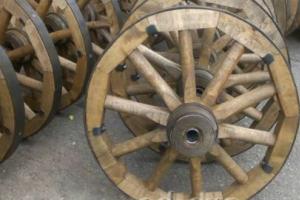Damage to the body kit may be caused by careless driving, a traffic accident or hitting an obstacle. A damaged part spoils the appearance of the car. Therefore, it is important to know what to do when the bumper is cracked and how to repair it yourself.
Depending on the degree of damage, methods for restoring a damaged car body element vary. Crack repair is performed using:
- Putties
Small chips, scratches and microcracks must be covered with putty.
- Bonding
Allows you to repair small cracks.
- Sealing
Makes it possible to restore the body kit after receiving severe damage and the appearance of large cracks.

- "Welding"
A plastic patch is applied. The method is applicable when the bumper is seriously split and holes appear.
To carry out the work, you will need the following tools and materials:
- Construction hair dryer and soldering iron.
- Brass mesh, staples from construction pistol, or metal tape.
- Wide and narrow rubber spatulas.
- Putty.
- Epoxy resin and fiberglass patch.
- White-Spirit, acetone or alcohol-based cleaners.
- Spray gun.
- Plastic solder.
- Primer.
- A grinding machine and wheels for it, or a block.
- Sandpaper of different grits.
- Mini drill or drill.
- Clamps.
- Paint in a can or spray can.

Bumper preparation
Damaged bumper, it is better to dismantle it. This will allow for more efficient and reliable repairs. Overall, the list preparatory work before restoring the body kit, it looks like this:
- It is necessary to thoroughly wash and dry the body protective element.
- The damaged area must be sanded and sanded. The paintwork can be removed using a sanding machine. In addition to the directly affected area, grinding should be done 3-5 centimeters near the cracks.
- Degrease work surface. The procedure will need to be repeated after removing each layer of paint.
- The edges of the cracks need to be sharpened in the form of a Latin letter V.
- Using a drill, drill out the crack on both sides. This will prevent it from spreading throughout the entire part.

After the preparatory measures have been carried out, you can proceed directly to the repair.
It is necessary to wash the bumper thoroughly. For this they use soap solution. In some cases, automobile detergents. For drying, use a tool such as a hair dryer.
Soldering large cracks
If the bumper bursts badly, then it is sealed. The operation allows you to give a damaged part a second life. However, you need to know how to solder a crack in the body kit. The operation is carried out in stages:
- Fastening the two parts of the body kit. Clamps are used for this. The two soldered surfaces are tightly applied to each other and securely fixed in this position.
- Soldering on the outside of the bumper. It is necessary not to leave large gaps between stitches.
- Reinforcement of the damaged area. Executed with inside bumper Mesh or brackets are soldered into the structure. This step increases the strength of the weld.
For soldering, it is recommended to use a powerful soldering iron (at least 100 W). The tool must be held in such a way that it does not burn through the plastic. It is also worth purchasing a device with wooden handle(plastic will melt after using the tool for a long time). For more precise soldering, the tip can be sharpened and cleaned.

After soldering is completed, the body kit is ready for further use. All that remains is to give the restored part an attractive appearance.
Using a hot air gun
When repairing severe damage, use a hair dryer. With its help, the edges of cracks are melted, as a result, a strong and reliable weld appears in place of the burst part of the body kit. To make the structure more durable, use plastic strips 1cm thick. They can be purchased separately, or cut from an old donor body kit.

When soldering, use the same type of plastic from which the bumper is made. Otherwise, the seam will turn out to be non-monolithic, which will lead to rapid destruction of the structure.
The method is effective in the absence of some parts of the body kit, serious cracks and holes.
Bumper gluing
Small cracks can be sealed. This method of do-it-yourself bumper repair is most popular among motorists, as it is technologically simple and effective. As an adhesive, use special glue for plastic, acetone, and liquid plastic. To obtain a polymer seam, a two-component 3M composition is used.
When gluing, you need to fix the bumper tightly, otherwise the halves may shift and the symmetry of the part will be disrupted. You will need to wait until the adhesive has completely dried.
Gluing with acetone is performed as follows: a substance is applied to the crack, as a result of which part of the plastic dissolves, forming a strong seam. Later, it is treated with 3M adhesive. Allow to dry and mask the traces of body kit restoration.
Alternative! Medium damage can be sealed with a mixture of glue and soda. To do this, you need to tightly connect the cracked parts, pour soda along the entire length of the crack, and apply glue to it. As a result chemical reaction a strong seam is formed.
According to generally accepted safety standards, every vehicle should be equipped not with metal bumpers, but with their plastic counterparts. When hitting a pedestrian, the plastic bumper significantly softens the force of the impact.
Thanks to this, the pedestrian has a chance to stay alive and not receive dangerous injuries (of course, provided that the speed of the car was not very high).
In addition, the use of plastic bumpers significantly reduces the overall weight of the car, which has a positive effect on overall maneuverability and dynamics. However, the main disadvantage of a plastic bumper is its weak impact resistance.
To all of the above, we can add the fact that some car manufacturers simply suck at making bumpers. They make them out of very thin plastic. Therefore, even a weak blow provokes the appearance of all kinds of cracks and holes.
As a result, the car owner has to deal with repairs more often than he would like. All those who have already encountered this problem are well aware that such repairs in any car service center are not cheap. In some cases, it is easier to buy a new part, but there are hobbyists who prefer to do everything themselves. It is for such beginner Kulibins that this article was written.
In fact, all the steps to restore a problematic bumper are not at all difficult, provided that your hands grow as they should :). Therefore, let's look at how to do everything without outside help.
First, let's say that according to statistics, car owners restore the front bumper of their vehicles much more often than the rear. This is explained by the fact that the front bumper is more often exposed to mechanical damage: hitting a curb; impacts during accidents; damage that occurs when hit by stones or other objects.
So, how to repair a bumper yourself?
First of all, it must be said that there are several ways to repair a bumper. First of all, types of repairs are divided according to the nature of the damage:
- chips, gouges, scratches without through damage
- cracks
- loss of a bumper fragment
Repairing chips, scratches and potholes on a plastic bumper
If the bumper has retained its integrity, then consider yourself lucky. Repairing chips and scratches is the simplest type of repair, which boils down to cleaning the chipped area sandpaper, puttying the damaged area, sanding and painting.
We will consider what you should pay attention to when performing these operations later when describing other types of repairs, since all these operations will be present in almost all types of bumper repairs.
To be fair, it should be noted that many motorists do not even repair chips and scratches, but drive with these damages until they decide to sell the car.
But the cracks can no longer be ignored...
Car bumper crack repair
Cracks are the most common problem found in plastic bumpers. A crack that is not treated in a timely manner can subsequently cause complete destruction of the bumper. Therefore, try to repair cracks immediately, rather than wait for the right moment.
First of all, it should be noted that today there are quite a lot of ways to repair cracks on a bumper. Special repair kits are sold and which method to choose depends on various factors: the type of plastic from which the bumper is made; from the tools at hand; from the car enthusiast’s skill in repairs; from the time allotted for repairs.
Bumper repair with clamps
So, for example, in conditions when there is absolutely no time for repairs, and you need to come up with something very quickly, you can even fasten the crack with plastic clamps.
To repair in this case, you will need a drill, a set of plastic, narrow clamps, and a drill.
First, the edges of the crack are drilled to prevent further spread. And then paired holes are drilled on both sides of the crack, through which a plastic clamp is pulled and tightened from the inside of the bumper.
Such ties should be made along the entire length of the crack at a distance of 1.5 cm from each other.
Of course, such repairs do not look very aesthetically pleasing and can be used as a temporary solution to the situation before replacing the bumper.
Bumper overhaul
It is, of course, possible major renovation bumper, after which the repaired part will be externally impossible to distinguish from the new one.
There are also several options for this repair, but they are all united by one principle: first, the crack is eliminated with simultaneous reinforcement, and then the seams are sanded and painted.
The crack can be repaired by soldering, gluing, or screeding. construction staples, special electrodes, metal mesh, etc. A combination of different methods is also possible.
Here we will look at one of the options for repairing a crack. plastic bumper…
First, you need to remove the damaged bumper from the car. Typically, the bumper is fixed with one bolt on the right and left sides in the inner section of the wheel arch (in the area where the bumper connects to the wing), as well as four bolts in the center (along the upper and lower edges of the bumper).
Next, we begin the procedure for restoring the bumper. First, you need to carefully drill out the boundaries of the crack with a small drill so that it does not spread further. Then, to increase the integrity and strength of the structure by inner surface The bumper (on the crack area itself) is soldered with a fine metal mesh. During this process, it is necessary to solder it as deep as possible into the plastic, but not to solder through the bumper itself. This procedure can be performed using a 60W soldering iron.
On the outer part of the bumper we clean the damaged area from paint, we also solder the crack, but without the mesh. We do this very carefully. Then we clean the seam. Remove dust from the surface. Using a construction hairdryer, we burn the fluff that will probably appear on the plastic after cleaning and then apply a thin layer of putty. We wait for the putty to dry, and then carefully clean it.
Next we paint the bumper. The bumper should be painted in thin layers, allowing each layer to dry for 30 minutes.
A minimum of five layers of paint are required. Then the painted area must be polished so that it acquires the desired shine and its shade becomes identical to the color of the entire bumper. We recommend polishing first the area that was repaired, and only then the entire bumper. That's all, we can install the bumper on the car.
Bumper repair with partial missing fragments
If holes appear in the bumper or pieces of plastic have fallen off, then do not rush to buy a new one. These damages are fairly easy to repair. In addition, all this can be done with your own hands.
As in the previous case, we remove the damaged bumper. Next, you should clean the damaged area from paint residues. Then you need to stick cardboard on the inside of the bumper, which will replace back wall and will not allow the repair mixture to spread (when we “build up” the bumper).
Next, using epoxy resin, fill the damaged area with it and let the mixture dry well. After this, we carefully sand and prepare for applying putty. Then slowly and very carefully remove the cardboard and putty the problem area from the inside.
As in the first case, after covering with putty, we carry out painting and polishing procedures, and then install the bumper in its rightful place.
Any defect in the car's coating is a reason for the owner's mood to be upset. Repairing a plastic bumper with your own hands can save you thousands of rubles.

The content of the article:
Age doesn't really matter vehicle. The bumper is considered the most vulnerable part of the car, since the part is located in front, and, in fact, performs protective functions; it is also susceptible to all sorts of influence factors.
But mostly these are minor damages associated with the destruction of the paintwork, which causes it to lose its appearance. But also, over time, a small scratch develops into a large center of corrosion processes. Therefore, delaying repairs is not recommended. Self-repair requires technical knowledge restoration work and availability of equipment.
Equipment required for work
Before self-repair plastic bumper, you need to stock up on theoretical knowledge and prepare the necessary tools.
You will need:
- Electrodes;
- Specialized hair dryer. With its help, you can easily straighten dents with little effort. A construction type with temperature control is suitable;
- Furniture stapler. It is necessary to strengthen the seams;
- Fine mesh soft alloy mesh. When repairing the bumper, it is applied to the seam;
- Thermal welding machine. The device has become quite widespread, both among amateurs and among professionals. It is used to solder damaged areas;
- Scotch tape, putty, bumper paint. These products will be needed at the stage of gluing, puttying and, accordingly, painting;
- Abrasive grinding machine. Apply at the end of work.
Preparing for work

Repairing plastic bumpers yourself should not be intimidating even for beginners. If there is a strong desire, the work will not take much time. However, before starting it, you should carefully read the instructions. It will be useful to watch training videos on the topic. The technique for repairing a plastic bumper may vary depending on the type of material. There are polyurethane, polypropylene and fiberglass bases. The damage, its shape and features are of great importance.
Damage can be divided into:
- Dents. Clear surface deformation;
- Cracks. End-to-end destruction. As a rule, with further inaction they increase;
- Scratches. They can be superficial, damaging the paint layer, or deep, destroying the plastic base;
- Structure rupture;
- Formation of breaches.
Plastic bumper repair

Soldering is carried out in the presence of cracks. The process is carried out from the back, pressing the parts as much as possible. The resulting seam is strengthened using construction stapler, or using a mesh that is soldered in as reinforcement. It is advisable to perform the operation on the front side as well; to do this, you need to remove the paint with a grinder, otherwise it will not allow the plastic to melt properly. Next, the front side is sanded in preparation for puttying and painting; we will not consider these points.
A fairly effective method using electrodes. You will need flat electrodes; they are sold in car dealerships. In this process, heating is carried out with a construction hairdryer. A soldering iron with a wide tip is also required. First, a mesh is soldered onto the joints, then electrodes are placed on top of it, which are melted by heating with a hairdryer. The temperature is about 600 degrees.
Liquid plastic is used to restore the surface as a result of cracks or deep scratches. This way the surface is leveled. In this case, an increase in temperature is not required. The main thing that is necessary is to decide on the type of material. After the substance reaches the desired state of hardness, it will need to be sanded.
Bumper painting after repair
We will not consider this point in detail, it’s just worth pointing out a few little things. If painting is done with a spray can, then you should not expect the color to match perfectly. It will be brighter, more saturated. The thing is that as time passes, the paint fades. This is taken into account when selecting paint for bottling. Several colors are mixed into a jar, after which the desired combination is obtained, obtained on a computer. And even this is not a guarantee that the color will match.
Video: how to repair a plastic bumper yourself:
Modern manufacturers have long moved away from producing metal bumpers. Now plastic and polymer materials are used for their manufacture. But sometimes small troubles happen on the roads and bumpers appear. various defects. This significantly spoils the appearance of the car. Repairing a plastic bumper with your own hands will help you save a significant amount of money. Let's look at how to do this.
Defects that spoil the appearance
Cars are operated in very unfavorable conditions. The bumper is affected by a lot of different factors every minute. This is sand (when driving on rough terrain), road dust, gravel from under the wheels of other cars, and so on.
These, as well as other factors, lead to loss of integrity of the paintwork. Auto body repair specialists distinguish several types of bumper damage depending on the extent of the damage. The most common damage is scratches (local). These are small defects on the outer surface of the product. In turn, scratches are divided into deep and shallow. In the first case, this is a defect that has reached the plastic directly. The shallow one reaches the base or soil. Next, dents or cavities are identified. What it is? These are locally deformed areas on the surface of the part. The reasons may be various mechanical or chemical influences.
Among the defects, cracks are also distinguished. This through holes. They can have different character and configuration. Cracks tend to grow due to vibration effects. In addition to reducing aesthetic characteristics, the strength of the part also decreases.
Breaks also often occur with the bumper. These are through holes on the walls of the bumper with individual pieces breaking off.
Each of these damages requires restoration work. Scratches and shallow dents can be removed by sanding, then puttying and priming, followed by painting. Defects such as cracks require a special approach and study of restoration technology. Repairing it at a service center is expensive, but repairing a plastic bumper with your own hands will be much cheaper and you can gain useful experience.
Preparatory stage

Next, be sure to clean the part from dust and dirt. The element is thoroughly washed. At the next stage, they determine what material the element is made of - manufacturers often make marks on the inside using stamping or melting technology. On back side you can see the following symbols:
- PP or PPVT - polypropylene.
- PUR - polyurethane.
- PAG6, GF15, GF30, ABS are hard plastics that melt at very high temperatures.
Fiberglass products are not marked in any way. Professionals recommend removing paintwork and primer in the area where the plastic bumper will be restored. And not only from the outside, but also from the inside. The paint is also removed around the defect - 10-15 centimeters from the edges. When repairing cracks, experts recommend drilling out their ends to prevent future damage to the plastic.

In the case of cracks near the connecting elements, V-shaped grooves are made with a grinder or using emery, where then, in the process of repairing a plastic bumper with your own hands, you will need to apply a special repair compound.
These are general preparatory procedures. Basic repairs depend on what material the part is made of. A bumper made of thermoactive materials is sealed using a hair dryer. You can also solder household appliance. Thermosetting parts are repaired by applying special reinforcing restoration materials with gluing.
Soldering with an electric soldering iron
Do-it-yourself bumper repair by soldering plastic will allow you to get good results. To do this, use staples from a furniture stapler and an ordinary but powerful household soldering iron. When the preparatory part is completed, the fragments of the part need to be combined as close to each other as possible. To obtain a more accurate result, as well as for better fixation, the damaged area is taped with tape.

It should be applied from the front side of the element. It is better to start the melting process from the inside out. This will give you the opportunity to feel how the polymer material reacts to heat - you don’t have to worry too much about the appearance. Movements with a soldering iron should be as uniform as possible. There is no need to make sudden jerks. The sting is moved along the defect with transverse movements. This way you can get the most even seam possible. For reliability, it is additionally reinforced.
Reinforcement
Staples are fused across the defect (let it be a crack), holding them with tweezers. To prevent the ends of the staples from piercing the front side, they are shortened using wire cutters. Paper clips tend to corrode. It is recommended to put them completely in plastic. The material for this is pulled from neighboring places.
Finish soldering
After training and honing the skill of repairing a plastic bumper with your own hands on the back side, you should move on to the front side. After melting the plastic on both sides, proceed to leveling the surface.
An eccentric sander and a P240 wheel are suitable for this. When processing a seam, there is no need to try to immediately obtain an ideal and flat surface. If you overdo it, you can make the material very thin. Small holes are filled with plastic putties.
Electrode welding
IN Lately in the repair of bumpers and others plastic products technology using special flat electrodes has become widespread. The equipment used is construction hair dryers with special attachments. The nozzle of such a nozzle has a diameter from 2 to 10 millimeters. This size is needed to receive high temperature in one local area - the electrode will melt more efficiently.
Such electrodes are commercially available. There is a large selection for both polyurethane and polypropylene bumpers. It is worth knowing that the electrode for different materials cannot be interchanged.
For work, a heat gun with a smooth temperature change function is used. This can be explained by the fact that different polymer materials have different temperatures melting. Next, the welding work begins.
Restoration of a polypropylene product
When repairing bumpers with your own hands at home, do not use polypropylene reinforcement materials. The repair compound will give the structure rigidity. For welding, you need to purchase a flat electrode made of polypropylene or pieces of a bumper with the same marking.

A nozzle is put on the hair dryer, the nozzle of which has a width of 4-6 mm. The temperature is set so that the electrode melts, but without bubbles or evaporation. The viscous mass is then pressed with force into a V-shaped, pre-made groove. The plastic mass will fill the entire defect, and only a small protrusion will remain at the repair site.
Experts give advice on how to repair a plastic bumper with your own hands, so that the fragments fit together as accurately as possible; you should weld from the middle of the defect. Next, the middle parts of the halves are processed, then the quarters. This is the most effective scheme
Features of polyurethane bumper repair
This material has a lower melting point than polypropylene. If it is above 220 degrees, the material will collapse. When we repair a bumper with our own hands, we must try not to overheat, otherwise the polyurethane will become brittle and lose its characteristics. There is no need to drill out the defect, as was done with polypropylene. For reinforcement, use a stapler or a special mesh. Next, electrodes are placed on top, the width of which is 8 millimeters, and they are melted with a hairdryer. The material should melt, but not evaporate.

As with propylene, the strips should be melted starting from the middle, then halfway and beyond. The nozzle for the gun must have a nozzle of 10 millimeters.
Restoration of parts made of refractory materials
The instructions for repairing a bumper with your own hands in the case of infusible plastics are slightly different. The technology of restoration work involves the use of glue.
The first step is a thorough cleaning. After this, fibers will definitely remain along the edges. They can be removed using a sander. The elements are combined and fixed with tape or glue. The best choice for the latter is epoxy resin. The immediate area of the damage and 50 millimeters around it are coated with glue.

Then epoxy resin impregnate a thin fiberglass material and place it on the fracture site. The fiber is laid layer by layer until the patch is equal in thickness to the base of the part.
After the glue and fiber have dried on the back, you can move on to the front surface. This is the technology that should be used for restoration.
Conclusion
Now it’s clear how to repair a plastic bumper with your own hands. This is a simple job that any car owner can handle. Do-it-yourself repairs will help you save money and return your car to an aesthetically pleasing and attractive appearance.
In addition to the fact that the bumper performs a protective function, it also serves decorative element decorations. It is not surprising that it is so important for us to keep him in good condition and provide him with decent care. Even if damaged, it can be repaired, and this alone can save you several thousand rubles instead of purchasing a new product. Presentability appearance the front bumper is lost over time, because today they are made of flexible but fragile plastic. Experts classify several types of damage to this element:
- cracks, which are considered rather unsafe damage. During operation, due to constant vibration loads, they increase in size, and this may be accompanied by unpleasant knocking sounds;
- scratches - as a rule, they begin with small ones, but constantly become larger, becoming cracks over time;
- dents - appear due to mechanical impact and lead to the creation of other deformations;
- various chips that occur after contact with sharp hard objects.
Preparatory work
Each type of damage requires an individual repair technique and algorithm for its implementation. However, before this, the product should be prepared at home. First, the bumper is removed from the car - this is done to make working with it more convenient. After this, it must be thoroughly cleaned of dirt, dust, oil residues, bitumen and other things.
The damaged area of the product plus an additional couple of centimeters is cleaned of primer, paint and varnish residues. It is necessary to carry out this work both from the outside and from the inside. Now you need to install the bumper material (front or building). It is believed that they are all made of plastic, but each has its own marking, which can be seen on the reverse side. These are propylene, polyurethane foam, various styrene and others. If there is no marking, then the product is made of fiberglass or fiberglass. In any case, you can find relevant information on the Internet. 
“Home” welding repair technique
One of the most reliable repair methods is surfacing bumpers using electrodes. As you guessed, we will need a hair dryer and special flat electrodes, which can be purchased in the departments of auto stores. Let's get started with the work:
- It is necessary to check the compatibility of the electrode and the material used to produce the bumper that is cracked. The best thing is to find a piece of an old analogue for testing.
- Let's try to weld a strip of electrode. If it holds securely, then we can pick up our damaged bumper.
- We find a crack and begin to weld it from the middle to the edges. As soon as the center is processed, we seal the surrounding areas.

Simplified recovery option
You can resort to a simpler method in terms of equipment and implementation. For this we need to stock up on an electric soldering iron, grinder, electric drill and metal staples, which are used in staplers. This option is less reliable, but you should weld the brackets with an assistant. We adhere to the following procedure:
- Using a drill with a small drill, we drill holes along the edges of the damage so that it does not expand further.
- We bring the deformed areas together and stick a piece of tape.
- Turning the bumper over inside up.
- Now the soldering itself begins. We run the soldering iron along the crack itself, continuing to work from the inside.
- Now we take a pack of staples from the stapler with tweezers or pliers and begin to weld them with plastic. This should be done carefully, ensuring a reliable connection.
- The product can be turned over front side up.
- The same procedure is carried out for the “face”, with one difference - staples will not be used here.
- It's time for sanding. We pick up a machine and a circle of type P240. Carefully smooth out the unevenness. If necessary, you can remove plastic hairs with a lighter. Additionally, rivets can be installed for strength.
And here is another, by the way, the most budget option.
As you can see, dear friends, welding a bumper at home is not something outstanding. If you approach the issue carefully, you can do it yourself and use the saved money on fuel for your car. In the future, I will try to delight you with new practical materials on the topic of car repair and care. I recommend subscribing to blog updates. I was with you








